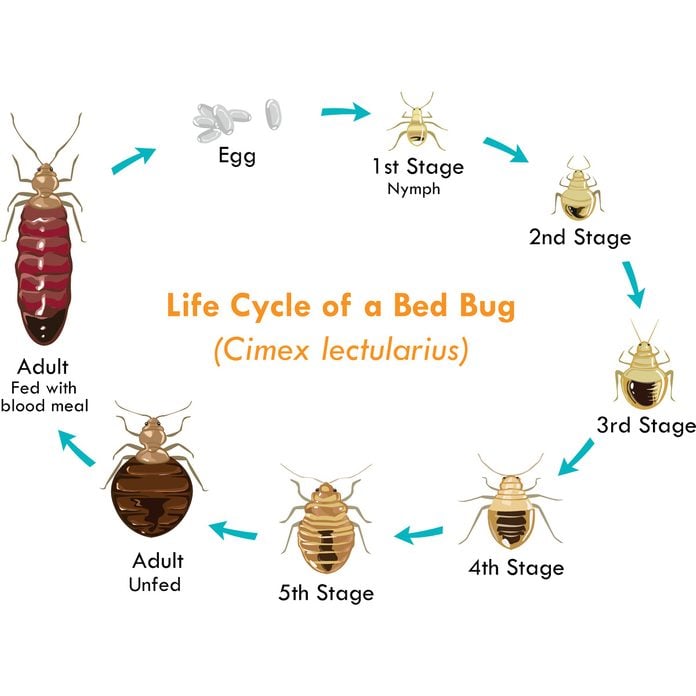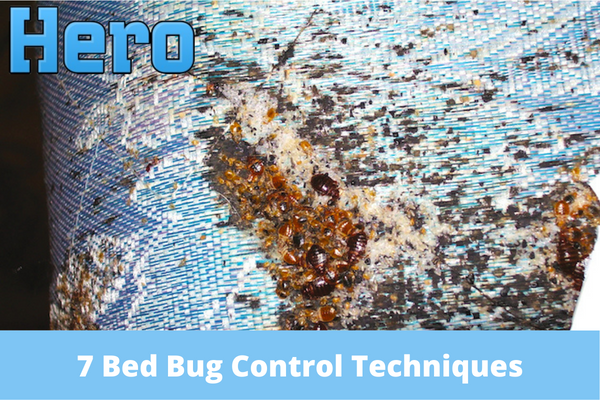Discover the most effective Bed Pest Treatment Techniques for Your Insect Control Plan
When faced with a bed pest invasion, recognizing the most effective therapy approaches comes to be vital for successful insect control. As property owners and residential or commercial property managers look for services to get rid of these durable bugs, recognizing the array of therapy alternatives offered is critical. From non-chemical methods that focus on ecological safety and security to targeted chemical therapies and comprehensive integrated bug management methods, the selection of options can be overwhelming. Selecting the ideal bed insect therapy technique customized to your certain situation is important for attaining enduring results.
Identifying Bed Bug Invasions
Determining signs of a bed bug invasion can be essential in efficiently dealing with the issue and stopping more spread in a timely way (Bed bug treatment). Bed bugs are elusive pests that hide throughout the day and appear in the evening to feed on blood. Usual indications of a bed pest problem consist of reddish-brown stains on bed linen or furniture from smashed insects, small dark areas that are bed insect waste matter, shed skins in areas where bed bugs hide, and a sweet, moldy smell in serious problems
One of the essential indications of a bed pest issue is waking up with unexplained welts or attacks on your skin, especially in a linear or clustered pattern. It is important to completely examine your sleeping area, including the mattress, box spring, headboard, and neighboring furniture for live pests or indicators of their visibility. Trigger recognition of a bed pest problem is essential to stop the scenario from escalating and needing a lot more extensive treatment approaches. If you think a bed pest infestation, it is suggested to look for specialist parasite control aid to effectively eliminate the pests from your home.
Non-Chemical Therapy Approaches
Non-chemical therapy approaches provide reliable options for addressing bed pest invasions without relying upon traditional pesticides. Heat treatment is one such technique that entails increasing the temperature level in infested areas to levels that are lethal to bed bugs. This technique is particularly useful for treating items such as furniture, apparel, and bed linen. Vacuuming is an additional non-chemical technique that can help in reducing bed insect populaces by literally eliminating the insects from surface areas. It is necessary to use a vacuum with a strong suction and a high-efficiency particle air (HEPA) filter to guarantee that caught bed insects are not reintroduced right into the atmosphere. Encasing mattresses and box springs with bed bug-proof covers can additionally be an effective non-chemical treatment technique. These covers catch any type of bed insects already existing within the mattress, stopping them from feeding and eventually bring about their demise. Furthermore, vapor treatment can be employed to kill bed insects and their eggs by exposing them to high temperatures, making it a useful non-chemical alternative for combating infestations.
Chemical Therapy Options
Having explored effective non-chemical techniques for attending to bed bug problems, it is important to think about the efficacy of chemical treatment options in combating these durable bugs. Chemical therapies play an important duty in bed bug control, particularly in severe infestations where non-chemical techniques might not give enough alleviation. There are different kinds of chemical therapies available for taking care of bed pests, consisting of insecticides, desiccants, and insect development regulatory authorities.
Pesticides are commonly browse around this web-site used to eliminate bed bugs on get in touch with and deal recurring defense versus future invasions (Bed bug treatment). Desiccants work by damaging the external waxy layer of bed pests, causing dehydration and death. Insect development regulatory authorities disrupt the bed pest life process by hindering their growth from nymphs to grownups, eventually minimizing the populace gradually
When considering chemical therapy alternatives, it is vital to prioritize safety by complying with label guidelines, utilizing suitable safety gear, and taking into consideration the potential threats to people and animals. Consulting with a professional bug control service can help figure out one of the most effective and secure chemical therapy for your details bed bug invasion.
Integrated Insect Monitoring Methods

IPM approaches for bed pest control may consist of thorough examination to identify the degree of invasion, recognition of essential harborage sites, and execution of cleanliness steps. Additionally, lowering mess, sealing cracks and holes, and eliminating potential concealing spots can help hinder bed insects from establishing themselves.
Moreover, non-chemical control techniques such as warm therapy, vacuuming, steam cleansing, and making use of bed bug catches can be reliable components official source of an IPM plan. These techniques target bed bugs at various life stages and interrupt their reproductive cycle, resulting in population reduction.
Normal surveillance and follow-up evaluations are essential in IPM to examine the effectiveness of control actions and make needed adjustments. By including integrated parasite monitoring methods right into your parasite control strategy, you can accomplish lasting success in managing bed insect problems.
Professional Extermination Providers
Expert elimination solutions provide specific knowledge and sources for effectively eliminating bed bug infestations. Bed pest invasions can be specifically challenging to tackle due to their strength and ability to conceal in different cracks and crevices. Professional exterminators are educated to determine the indicators of bed insects, find their hiding places, and employ targeted treatment methods to eliminate them effectively.
When choosing a professional extermination service for bed pest control, it is necessary to try to find accredited and licensed pest control business with experience in dealing especially with bed bugs. These professionals have accessibility to a series of therapy choices, including chemical and non-chemical methods, to effectively deal with bed insect invasions while making certain the safety and security of family pets and residents.
Furthermore, expert exterminators can give follow-up weblink inspections and treatments as required to ensure that the problem is completely gotten rid of. Their proficiency in bed insect actions and treatment protocols can help stop future problems, providing tranquility of mind for house owners and services alike. When confronted with a stubborn bed bug problem, employing the services of specialist exterminators is often one of the most trusted remedy to attain full obliteration.
Conclusion

When faced with a bed insect invasion, identifying the most effective treatment techniques comes to be critical for effective pest control. Typical indicators of a bed insect problem consist of reddish-brown spots on bed linen or furnishings from crushed pests, tiny dark areas that are bed insect excrement, dropped skins in areas where bed insects hide, and a sweet, moldy odor in extreme problems.
Having explored reliable non-chemical methods for dealing with bed pest infestations, it is necessary to consider the efficiency of chemical treatment options in combating these durable bugs. Chemical treatments play an important duty in bed insect control, particularly in serious problems where non-chemical methods might not offer enough relief. By including these different therapy methods into a thorough pest control plan, individuals can efficiently eliminate and handle bed insect infestations in their homes or organizations.